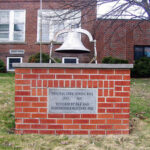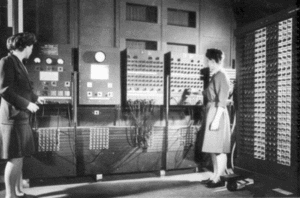In 1997-98, Winona State University experienced what many educational institutions do: change. The leadership styles used for these changes are outlined and referenced by Richard Bowman. These leadership styles are offspring of D.R. Conner’s “Leading at the Edge of Choaos”, and are titled: anti-change, rational, panacea, bolt-on, integrated, and continuous.
Also in 1998, McREL began gathering three decades of research in educational leadership and the effects it has on school effectiveness. McREL identified numerous leadership responsibilities that are closely related to student achievement. McREL’s authors’ Waters, Marzano, and McNulty, introduced a framework based on a “balance” mode of leadership, encompassing knowledge, skill, strategy, and specific tools leaders need to have a positive impact on achievement.
With these two views of educational leadership, the authors offer some similar ideas with regard to change. For example, in McREL’s Figure (3) “Principal leadership responsibilities”, they have identified 21 different qualities that embrace positive change in student achievement. Of the 21 listed, the six with the largest occurrence (Avg. r) include: situational awareness, intellectual stimulation, change agent, input, culture, and monitoring/evaluation. The situational awareness quality is similar to Conner’s leadership style of “anti-change”. Anti-change is when a leader attempts to avoid as much disruption or fluctuation to the currently working system. A leader that addresses both these qualities must be detail orientated.
The second quality with the highest average was intellectual stimulation. The stimulation factor is consistent with Conner’s Panacea leadership style because its foundation is based upon motivational qualities. The importance of being a motivator is maintaining open communication.
Another high average responsibility is being an agent of change. Additionally, other high average responsibilities include being aware of the culture and having input. Being aware of culture is consistent with Conner’s rational leader. A rational leader is someone who attempts to gain focus by using a sense of logic. Logic is a stable way of addressing change and is usually easier to translate into positive change.
As stated earlier, Winona State University had many things going on in 1997-98. Change was everywhere. The changes that were initiated included: teacher licensure, graduation standards, accreditation, partnerships, and semester conversion. Each change was independent of one another. However, each change was not to be approached in the same fashion.
The leadership style of “anti-change” was used to address the needs of the college to convert the current semester schedule. The process of anti-change is when you approach a change attempting to create the least amount of stress or disturbance. The leadership responsibilities that are closely related to this type of leadership are outlined in McREL’s (Figure 7) Leadership practices according to magnitude of change. The responsibilities that are related to the Winona’s semester conversion is: focus, order, and culture. An effective leader needs to understand the culture of the school. He/she needs to understand the environment of the change. Also, the leader must maintain focus and order for the change to be realized slowly, surely, and with the least resistant.
When Winona University attempted to address their concerns for future accreditation, they decided to use a rational leadership approach. This first-order approach is based upon past experiences where the accreditation team knows what is needed to achieve proper credentials. Once again, this leadership style is based upon using logic. The leadership responsibilities in figure 7 that are relevant include focus, knowledge of curriculum, instruction, and assessment, and monitoring and evaluation. It is based upon the low magnitude and consequence of the failure of implementations, that a rational leadership style is chosen.
After reading Bowman’s paper on Conner’s leadership styles, it is evident that Bowman is endorsing Conner’s notion of knowing the environment. The environment of the institution experiencing the change must be identified and understood. Conner also endorses that exploring the use of different leadership styles is also beneficial. The important factor to consider is the magnitude of the change and the impact and consequences failure may have if the change doesn’t happen. What will happen to the environment? That is what Conner is protesting.
Conner, also stated one of the conclusions stated by McREL, that there exists no fail-safe solution to educational problems. McREL stresses the need for organization, accessibility, and application of leadership styles that have worked in the past. McREL’s advice is more structured than Conners. However, both recognize that the need for communication is vital and the need to understand the ever-changing educational environment.
After reading the frameworks offered by McREL, I do have some suggestions. In figure 5 there is a section detailing the school and teacher practices and student factors influencing student achievement. This section is too brief. In fact, I think it undermines what really happens in school across America. For example, it simply states that the teacher’s three practices that have an impact on student achievement include: instructional strategies, classroom management, and curriculum design. However, teachers have more impact on students in many different ways. Teachers are dreamers. Teachers have the ability to inspire and motivate. Also, teachers are counselors because they listen to their students and try to help them in any faction of their lives. Teachers are not just people who get up and lecture each day and give homework and grade papers. Teachers are more. Teachers foster positive self-esteem, which can lead to higher student achievement.
Additionally, I was surprised by some of the findings in figure 3. Figure 3 talks about the responsibilities of school principals. I was surprised that the use of rewards was low average. However, the statistics are based upon only seven studies. I know most people work well with rewards. Principals offer rewards in forms of praise. At my school, the principal is always saying positive things about the positive things that are happening around the school. Perhaps more studies would offer different results consistent with my experiences.
Lastly, another suggestion I would make is to place more focus on discipline. Discipline is only mentioned in figure 7. In many private schools and rural areas, discipline problems are miniscule. However, in inner-city schools, discipline problems are an everyday occurrence. The principal needs to make sure that one or two “problem-children” are not controlling the school. It is also important that these problems do not have a negative impact on the classroom instruction and expectations. One “bad-apple” should not dictate the growth of a classroom. The teacher should have the support of the principal. An effective leader will lead by example and will foster innovation by creating a consortium of communication, support, and integration.




